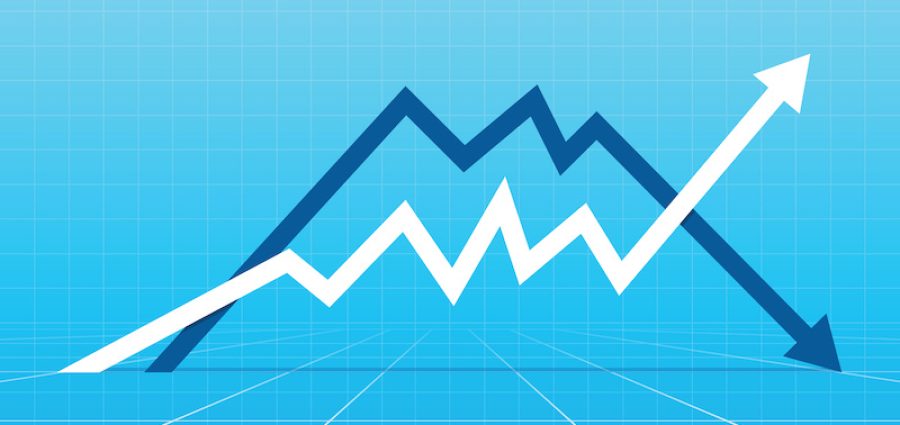Much has changed since our last look at the overall economic picture a month ago.
The presidential race heated up. The stock market came back down to earth. And another round of industry reports indicated moderate improvement in some categories coupled with eye-opening declines elsewhere for both the U.S. economy as a whole and distribution in particular.
In other words, business cycles appear to be returning to normal — albeit slowly — in this most abnormal year.
One theory, based on the report that MDM compiled for our most recent Premium issue, A Pandemic Operating Manual, is that companies have spent the last few months accepting the new realities of life during a pandemic by transforming their businesses — i.e., making it easier for employees to work from home, streamlining virtual sales calls, implementing contactless delivery, etc.
Many are proving on a daily basis that distribution is a resilient, resourceful industry by using this time to adapt to the new realities of business during a pandemic. Their work appears to be paying off based on some of the key reports of the last few weeks. Let’s start with these upbeat economic indicators.
- Economic activity in the manufacturing sector expanded in August, and the overall economy grew for the fourth consecutive month — after dipping significantly due to the coronavirus — said the nation’s supply executives in the latest Manufacturing ISM Report on Business. The August PMI registered 56%, up 1.8% from the July reading of 54.2%. The New Orders Index registered 67.6%, an increase of 6.1% from the July reading of 61.5%.
- New orders for manufactured goods in July, up three consecutive months, increased $27.8 billion or 6.4% to $466.1 billion, according to the U.S. Census Bureau. This followed a 6.4% June increase. Shipments, also up three consecutive months, increased $21.3 billion or 4.6% to $479.5 billion.
- Total industrial production rose 0.4% in August after increasing 3% in July, according to the Industrial Production and Capacity Utilization Report, released by the Federal Reserve. Manufacturing output continued to improve in August, rising 1%, but the gains for most manufacturing industries have gradually slowed since June.
The U.S. Census Bureau and the U.S. Bureau of Economic Analysis announced that while the trade deficit increased, both exports and imports also increased in July, though they remained below pre-pandemic levels, reflecting the ongoing impact of COVID-19. July exports were $168.1 billion, $12.6 billion more than June exports. July imports were $231.7 billion, $22.7 billion more than June imports.
And Indian River Consulting Group’s (IRCG) weekly Pandemic Revenue Index for the work week of Sept. 14-18 indicated a sales increase of 4.9% versus the same week in 2019, which is the largest increase outside of a week distorted by a holiday. Normalizing for average daily sales, the increase makes six consecutive weeks of increases.
Still Some Disappointments
The first few weeks of September brought some disappointing economic news, as well, including some troubling trends out of the construction market and in such categories as fasteners and cutting tools. Here are some of the less-than-enthusiastic reports of the last month.
- Construction spending during July 2020 was flat. It was estimated at a seasonally adjusted annual rate of $1,364.6 billion, 0.1% above the revised June estimate of $1,362.8 billion, according to the U.S. Census Bureau. The July figure is 0.1% below the July 2019 estimate of $1,366.0 billion. During the first seven months of this year, construction spending amounted to $792.6 billion, 4% above the $761.9 billion for the same period in 2019.
- Led by some further moderation in the growth of production-related indicators, the Chicago Fed National Activity Index (CFNAI) declined to +0.79 in August from +2.54 in July. Two of the four broad categories of indicators used to construct the index made positive contributions in August, but all four categories decreased from July. The index’s three-month moving average, CFNAI-MA3, moved down to +3.05 in August from +4.23 in July.
- U.S. cutting tool consumption totaled $137.8 million in July, according to the U.S. Cutting Tool Institute (USCTI) and The Association For Manufacturing Technology (AMT). This total, as reported by companies participating in the Cutting Tool Market Report collaboration, was down 30.6% when compared with the $198.5 million reported for July 2019 and down 8.5% from June’s $150.6 million. With a year-to-date total of $1.1 billion, 2020 is down 21.2% when compared with the first seven months of 2019.
- The U.S. Census Bureau announced that the combined value of distributive trade sales and manufacturers’ shipments for July — adjusted for seasonal and trading-day differences but not for price changes — was estimated at $1.4 trillion, up 3.2% (±0.2%) from June but down 1.2% (±0.4%) from July 2019.
- The seasonally adjusted Fastener Distributor Index (FDI) for August was 49.2, down from 54.6 in July, according to the latest analysis from Baird, FCH Sourcing Network and the Institute for Supply Management. The Forward-Looking Indicator (FLI) was relatively steady, staying in the ~53-54 range seen consistently over the past three months (August, 53.3).
Stay tuned to mdm.com for the latest economic benchmarks, including our special report in the October 25 edition of MDM Premium that will look specifically at how distributors are performing and their expectations for the remainder of the year and beyond.
Related Posts
-
Recent economic reports show upward momentum for the overall U.S. economy and the wholesale distribution…
-
Distributors shift from rear-facing analysis to forward-looking predictive analytics models.
-
The U.S. Census Bureau on Friday released advance indicators showing that the international trade deficit…






